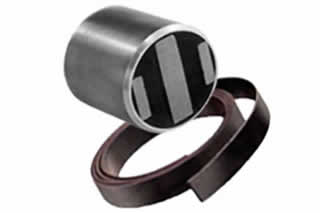
When using a magnet around heat, you should be aware of its Curie temperature. Magnets are susceptible to heat-related demagnetization. Whether it’s a ceramic or rare-earth magnet, exposure to excessively hot temperatures may cause it to lose its magnetic properties.
In some cases, waiting for the magnet to cool may restore its magnetic properties. In other cases, though, the magnet will be permanently damaged, and the only solution will be to replace it. By understanding Curie temperatures, you can keep your magnets safe from heat-related demagnetization.
What Is the Curie Temperature?
Also known as the Curie point, the Curie temperature is the temperature at which a magnet will permanently lose its magnetic properties.
There’s a correlation between the strength of magnets and their temperature. In the late 1800s, French chemist Pierre Curie found that when the temperature of a magnet reached a certain point, it would undergo permanent demagnetization. Curie’s discovery laid the framework for Curie temperatures.
Why the Curie Temperature Is Important
Magnets can typically handle some temperature fluctuations without succumbing to any permanent damage. They may experience some loss of magnetic strength when exposed to heat, but it’s usually temporary. Once the magnet has cooled, the strength of its magnetic field will return. If a magnet gets too hot, however, it may become permanently demagnetized.
Curies temperatures provide insight into how much heat magnets can handle without succumbing to permanent demagnetization. If you’re planning to use a magnet at or near room temperature, you probably don’t need to worry about it. When using a magnet around heat, though, the Curie temperature will allow you to protect it from damage.
Comparison of Different Magnets and Their Curie Temperatures
There are different types of magnets, some of which have a higher Curie temperature than others. Ceramic magnets, for instance, typically have a Curie temperature of over 800 degrees Fahrenheit.
Also known as ferrite magnets, ceramic magnets consist primarily of iron and strontium carbonate. They may contain different concentrations of these elements, or they may contain other elements, resulting in different Curie temperatures. Nonetheless, most ceramic magnets can handle over 800 degrees Fahrenheit without succumbing to any permanent damage.
Neodymium magnets, on the other hand, typically have a lower Curie temperature of about 600 to 750 degrees Fahrenheit. Neodymium magnets are made of neodymium, iron and boron. This composition makes them more susceptible to permanent heat-related demagnetization than their ceramic counterparts.
